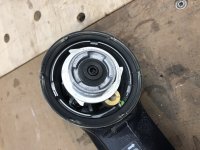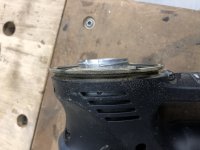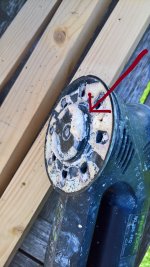imaginarynumber
Member
- Joined
- Dec 18, 2009
- Messages
- 82
I just cannot remove the pad from my 125mm Rotex no matter how hard I try.
I have no problems with my 90mm and 125mm Rotex sanders.
Although I have had the sander for years, I haven't used it that much. It used to jump and bounce around all over the place, so much so that I eventually only used it with an interface pad for sanding 2K paints on MDF. I guess that I should have returned it as faulty but it was quite some time before I got to use a friend's 125 and realised that mine is badly balanced.
My last attempt to remove the pad ended up with the velcro and foam backing sheering off, leaving just the plastic base.
I guess that I am going to have to use an oscillating saw to remove it. Can any one post a picture of the sander without a pad fitted so that I know where to be careful when cutting, or can anyone recommend an alternative way of removing it?
Many thanks
I have no problems with my 90mm and 125mm Rotex sanders.
Although I have had the sander for years, I haven't used it that much. It used to jump and bounce around all over the place, so much so that I eventually only used it with an interface pad for sanding 2K paints on MDF. I guess that I should have returned it as faulty but it was quite some time before I got to use a friend's 125 and realised that mine is badly balanced.
My last attempt to remove the pad ended up with the velcro and foam backing sheering off, leaving just the plastic base.
I guess that I am going to have to use an oscillating saw to remove it. Can any one post a picture of the sander without a pad fitted so that I know where to be careful when cutting, or can anyone recommend an alternative way of removing it?
Many thanks




